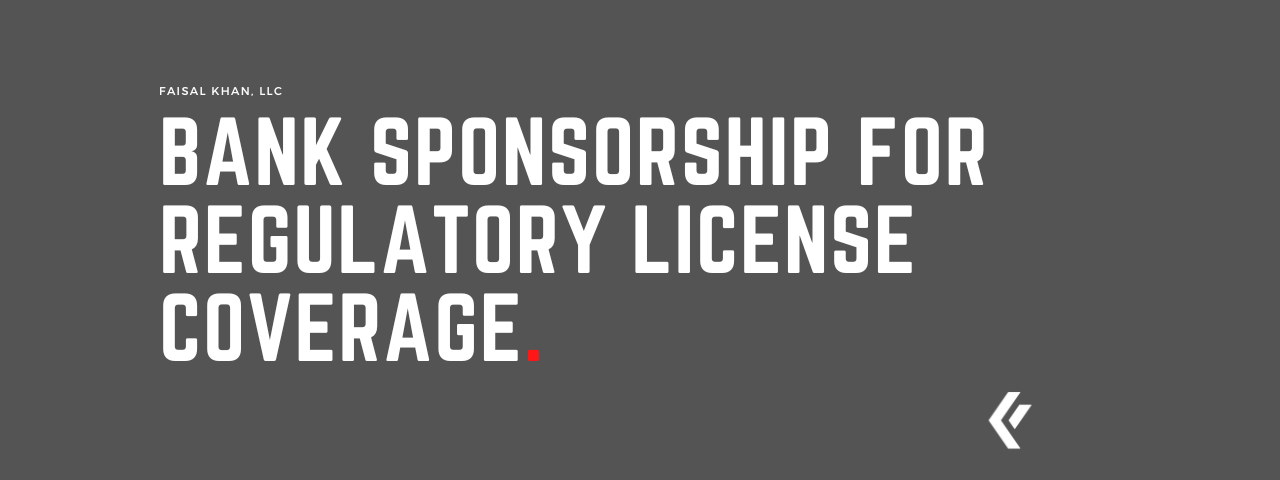How can you benefit from a Bank-led Sponsorship for Money Transmitter Licenses?
Your incumbent or startup may need money transmitter licenses to operate in the United States. However, obtaining money transmitter licenses is not the only way of getting regulatory coverage in the US for money transmission.
Here is a short explanatory video on bank-led sponsorship:
Chartered Banks and Credit Unions can also provide regulatory coverage for money transmission under the umbrella of their license. This process is typically known as bank-led sponsorship. Under a bank-led sponsorship, the legal and regulatory onus of money handling (i.e. flow of funds), KYC, compliance, reporting, transaction screening, etc. are all handled by the bank. It is under the bank’s charter that umbrella coverage is extended out to the company seeking regulatory coverage.
The whole goal of a bank-led sponsorship is to subscribe to a basic banking tenant (service) and build the case on top of that. For example, every customer that signs up for your app is opening an account with the bank. The app simply serves as a secure communication conduit between the bank and the customer. The flow of funds is as such, so that only the bank handles the money and no one else (especially the company seeking regulatory coverage) does not have access to client funds (for if they do, then they are deemed to be a money transmitter and hence would require money transmitter licenses).
Not only can a bank provide regulatory cover for money transmitter licenses, but it also provides much-needed access to banking services like ACH, debit/credit card processing, FedWire/SWIFT, card issuance, etc.
It is precisely this combination that makes a bank-led sponsorship so favorable amongst incumbents and startups. However, not everything is as rosy as it seems.
Startup? Here is a heads-up for you!
Banks (like other businesses) are in the business of making money. They prefer to work with post-revenue companies, i.e. those that already have transactions and are making money. It is one thing to work with a startup that might make millions per day, but it is more pragmatic for a bank to work with an incumbent that already has ready transactions and that is something the bank can bank on.
If you are a pre-revenue startup with a limited understanding of the banking world from a lingua franca and compliance point-of-view, chances are, you will be very politely declined in the early stages of your communication. Banks do not have the time to ‘explain how things work’ to you. They don’t have the luxury to look at your business plan and understand all the nuances of projections that are (at present) 100% theoretical in nature. Keep that in mind when approaching banks.
Perhaps the most fundamental question is that of money. If you are a startup or a relatively new company that might be post-revenue, do not expect the bank to offer its services (i.e. regulatory coverage) to you for free. You may very well be a good negotiator or bargainer, sadly, this will fall on deaf ears in the bank.
Banks like to provide you with regulatory cover, but it has costs associated with it. Especially compliance costs. Hence, the bank will bill you a minimum. For example, the term sheet might say, US$ 5,000 per month which includes 5,000 transactions at US$ 1.00 each. In simple words, the bank wants you to do a minimum of 5,000 transactions worth a Dollar each. If you are below the minimum, you will pay US$ 5,000. If you do 5,000 transactions, you pay exactly US$5,000 and if you go above and beyond 5,000 transactions, say 6,287 transactions in total, then you will be billed extra for 1,287 transactions at a US$1.00 each, over and above the US$5,000 that they are already charging you.
If you would like to learn more about Bank Sponsorship for Money Transmitter License, please fill out the form below. There is no cost or obligation to fill out the form. It is 100% free.
—
This page was last updated on October 13, 2023.
–

